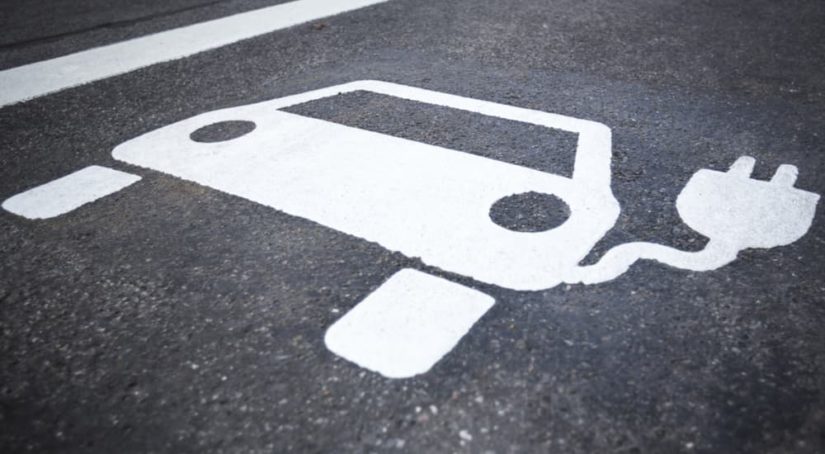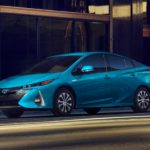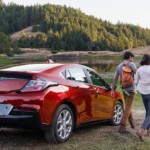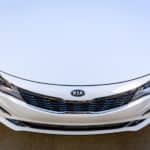In 2001, the Toyota Prius reached the American market, introducing everyone to the word “Hybrid.” While you may not be able to describe exactly how a hybrid achieves its remarkable fuel efficiency, there are few drivers today who are not aware of the basics. However, today the world of hybrids has become far more complex than it was when the Prius first hit the scene. Nearly every automobile manufacturer offers a variety of hybrid models, but not every hybrid is the same. There are now mild-hybrids and plug-in hybrids, both offering their own advantages and disadvantages. So which should you choose?
The Traditional Hybrid
When most people think of hybrids, they imagine the Prius – a traditional hybrid. These are still by far the most common type of hybrid available, as they are simple, affordable, and continue to provide excellent fuel economy. In a traditional hybrid, the gasoline engine does most of the work and is usually running. However, it is combined with small electric motors and a battery pack. The hybrid system captures otherwise wasted energy, storing it in the battery and then using it to supplement the gasoline engine when needed.
A traditional hybrid is extremely simple to live with, as it mostly functions just like a normal gasoline vehicle. The only real difference from the driver’s perspective is that it requires fewer trips to the gas station. Traditional hybrids are also relatively affordable, and you can often find hybrid versions of popular vehicles – for instance, the Toyota RAV4, Honda Accord, and even Ford F-150 are all available as hybrids. If you have fairly average driving habits, then a traditional hybrid remains a stellar option.
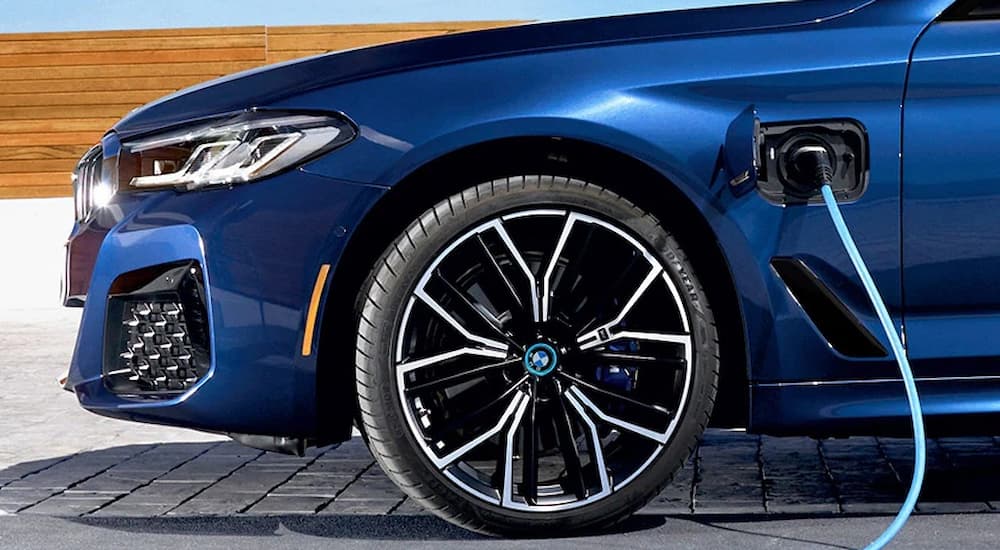
The Mild-Hybrid
A mild-hybrid is effectively a watered-down version of a traditional hybrid. While it follows the same basic principles of a hybrid, it uses smaller electric motors and will feel far more like a normal gasoline car. Mild-hybrid systems do offer fuel economy benefits, but they are generally only a couple MPG better than a non-hybrid version of the same powertrain. The primary use of a mild-hybrid system is to improve performance without increasing fuel consumption. Since electric motors offer good low-end torque, a place where gasoline engines are weak, this system is often found in pickup trucks and luxury cars – Ram and BMW are two of the most prolific users of mild-hybrid technology.
The Plug-In Hybrid
A plug-in hybrid can be best thought of as a halfway point between a gasoline-powered vehicle and an electric car. Able to drive on either gasoline or electricity, the plug-in hybrid offers the best of both worlds – the long range of a gasoline engine and the zero-emissions power of batteries. However, plug-in hybrids tend to be relatively expensive and require a bit more driver attention than a traditional hybrid. These vehicles are best suited to people with short daily commuters who are interested in an electric vehicle but are not ready to give up the long range of a gasoline vehicle.
While the principles behind a plug-in hybrid are very similar to a traditional hybrid, there are some differences. The most important difference, as the name implies, is the presence of a plug. Unlike a full electric vehicle (think Tesla), a plug-in hybrid does not need to be plugged-in to operate. If you deplete the battery, all that means is that the gasoline engine kicks in, and it continues to operate like a traditional hybrid. However, if you do choose to plug in and recharge, you may not need to use the gasoline engine at all.
The batteries and electric motors in a plug-in hybrid are much larger and more powerful than those in a traditional hybrid, although still not nearly as capable as those in a full EV. While traditional hybrids generally have battery capacities under 5 kWh, plug-in hybrids are usually in the 10-15 kWh range (actual EVs often approach or even exceed the 100 kWh mark). This means that they can operate on battery power for much longer distances and at much higher speeds. The 2021 RAV4 Prime plug-in hybrid can actually travel for 42 miles without burning a drop of gasoline, although most models only have electric ranges of around 25 miles.
This long electric range is what makes plug-in hybrid vehicles well-suited for drivers with short commutes. If everything works out right, you can spend most of your time traveling in electric mode and will only need to use the gasoline engine for the occasional longer journey. However, for this to work, you will need to be able to plug in somewhere. A plug-in hybrid can be recharged from a common electrical outlet, but having access to a Level 2 charging station will significantly speed up the process (generally cutting the time from half a day to a couple of hours). Fortunately, Level 2 chargers can be installed in your garage or driveway by any certified electrician, so this is not a significant hurdle for many people.
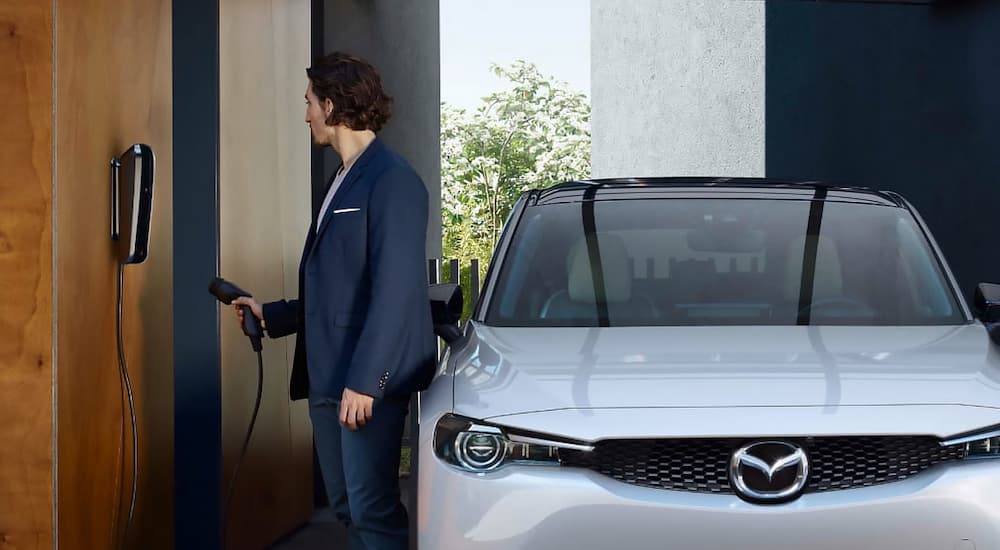
Series Hybrids and Range Extenders
Most plug-in hybrids are what are known as “parallel hybrids,” meaning that the gasoline and electric powertrains operate in parallel – they can both be active, or they can hand off between each other as needed. This is exactly how a traditional hybrid operates and is rather intuitive to anyone who has driven a hybrid before. However, there are exceptions. Some plug-in hybrids are “series hybrids” and function much closer to how a pure electric vehicle works (indeed, some are electric vehicles with a gasoline engine tacked on).
In a series hybrid, the vehicle is always driven by the electric motors, and the gasoline engine operates purely as a generator to recharge the battery when needed. The Chevy Volt was the most famous series hybrid, although the BMW i3 was an interesting take on the idea. While the Volt was always a hybrid, the i3 was marketed as a pure electric vehicle – one that you can option with a small two-cylinder gasoline engine if the 72 miles of electric range was insufficient. Today, this technology has been falling out of favor as battery technology improves and there is less need for a gasoline engine backup, but Mazda is poised to bring range extenders back for the MX-30 electric vehicle.
The most common series hybrid still in production is the Mitsubishi Outlander. However, while the Outlander normally functions as a series hybrid, the gasoline engine can be mechanically connected to the front axle when maximum acceleration is needed. Such a system is more complicated, but it allows the Outlander to offer the advantages of both a series hybrid and a parallel hybrid. It also demonstrates that, to the driver, the difference between a series hybrid and a parallel hybrid is mostly academic. Both will function in a similar manner and do not need to be treated any differently in daily life.
Choosing a Hybrid Vehicle
With the variety of hybrids available today, it will be easy to find an option that will work for any driver. No longer are hybrids only available as compact sedans with limited performance. Modern hybrids include SUVs, pickup trucks, sports cars, and more, giving you better fuel economy as well as the capabilities you desire. In fact, many modern hybrids offer superior performance to their traditional gasoline-powered counterparts. The RAV4 Prime plug-in hybrid is the second-fastest vehicle in the Toyota lineup after the Toyota Supra sports car, and the F-150 Hybrid offers more torque than even the F-150 Raptor.
The most important factor in buying a hybrid is figuring out which one is the best fit for your needs. If you are buying a hybrid to save money on gasoline, remember to factor in the higher cost of a hybrid powertrain. Traditional hybrids are less expensive than plug-in hybrids and will pay for themselves faster if you tend to rack up lots of miles commuting and traveling. However, a plug-in hybrid offers the advantage of mainly using electricity during short trips, so if you don’t usually drive long distances and have an easy way to recharge, they can be the better choice. No matter which one works best for you, modern hybrids offer some exciting capabilities and options.
